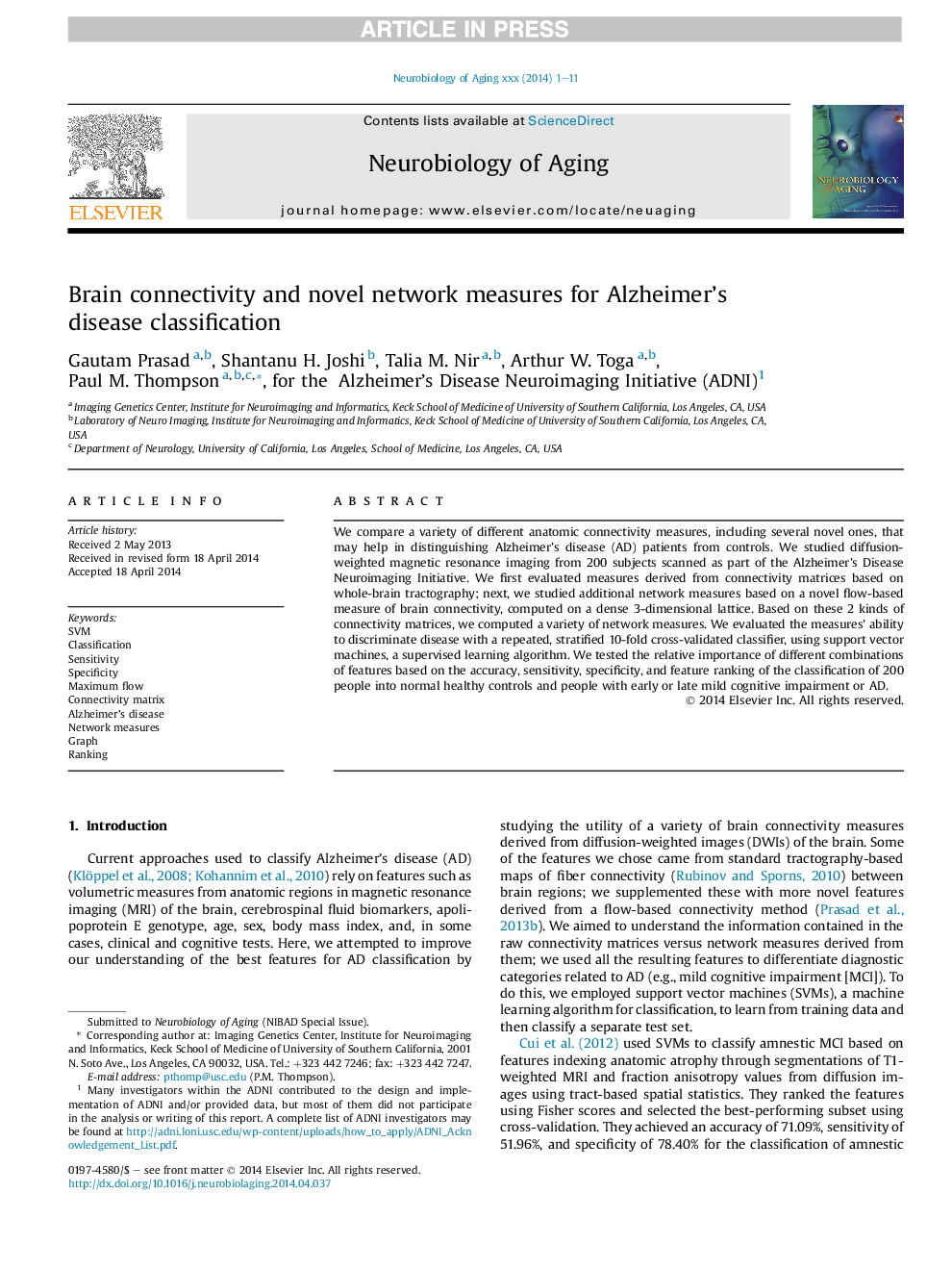| Article ID | Journal | Published Year | Pages | File Type |
|---|---|---|---|---|
| 6805266 | Neurobiology of Aging | 2015 | 11 Pages |
Abstract
We compare a variety of different anatomic connectivity measures, including several novel ones, that may help in distinguishing Alzheimer's disease (AD) patients from controls. We studied diffusion-weighted magnetic resonance imaging from 200 subjects scanned as part of the Alzheimer's Disease Neuroimaging Initiative. We first evaluated measures derived from connectivity matrices based on whole-brain tractography; next, we studied additional network measures based on a novel flow-based measure of brain connectivity, computed on a dense 3-dimensional lattice. Based on these 2 kinds of connectivity matrices, we computed a variety of network measures. We evaluated the measures' ability to discriminate disease with a repeated, stratified 10-fold cross-validated classifier, using support vector machines, a supervised learning algorithm. We tested the relative importance of different combinations of features based on the accuracy, sensitivity, specificity, and feature ranking of the classification of 200 people into normal healthy controls and people with early or late mild cognitive impairment or AD.
Keywords
Related Topics
Life Sciences
Biochemistry, Genetics and Molecular Biology
Ageing
Authors
Gautam Prasad, Shantanu H. Joshi, Talia M. Nir, Arthur W. Toga, Paul M. Thompson, Alzheimer's Disease Neuroimaging Initiative (ADNI) Alzheimer's Disease Neuroimaging Initiative (ADNI),
